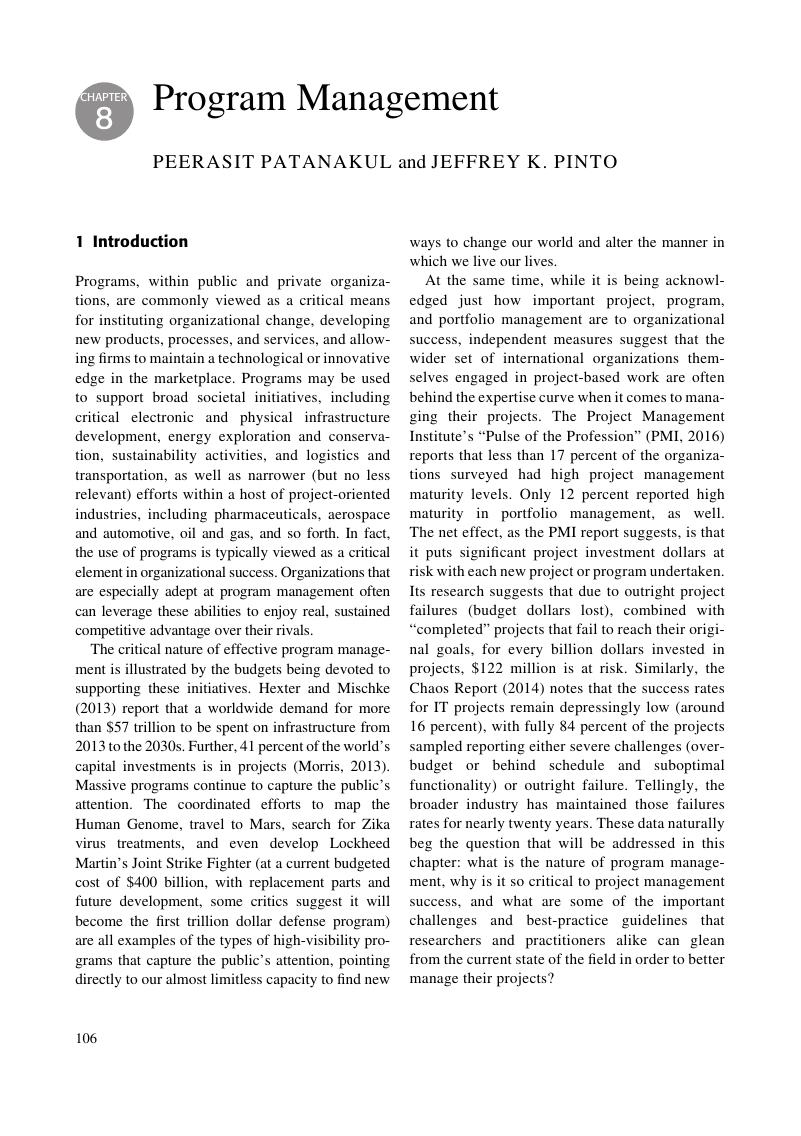Book contents
- Cambridge Handbook of Organizational Project Management
- Cambridge Handbook of Organizational Project Management
- Copyright page
- Contents
- Figures
- Tables
- Contributors
- Foreword
- Introduction
- Part I Strategy
- Part II Organizations
- Introduction to Part II
- Chapter 6 The Governance of Organizational Project Management
- Chapter 7 Project Portfolio Management
- Chapter 8 Program Management
- Chapter 9 Organizing for the Management of Projects
- Chapter 10 Project Governance and Risk Management
- Part III People
- Part IV New Directions
- Conclusions
- Index
- References
Chapter 8 - Program Management
from Part II - Organizations
Published online by Cambridge University Press: 08 June 2017
- Cambridge Handbook of Organizational Project Management
- Cambridge Handbook of Organizational Project Management
- Copyright page
- Contents
- Figures
- Tables
- Contributors
- Foreword
- Introduction
- Part I Strategy
- Part II Organizations
- Introduction to Part II
- Chapter 6 The Governance of Organizational Project Management
- Chapter 7 Project Portfolio Management
- Chapter 8 Program Management
- Chapter 9 Organizing for the Management of Projects
- Chapter 10 Project Governance and Risk Management
- Part III People
- Part IV New Directions
- Conclusions
- Index
- References
Summary

Information
- Type
- Chapter
- Information
- Cambridge Handbook of Organizational Project Management , pp. 106 - 118Publisher: Cambridge University PressPrint publication year: 2017
References
Accessibility standard: Unknown
Why this information is here
This section outlines the accessibility features of this content - including support for screen readers, full keyboard navigation and high-contrast display options. This may not be relevant for you.Accessibility Information
- 4
- Cited by
